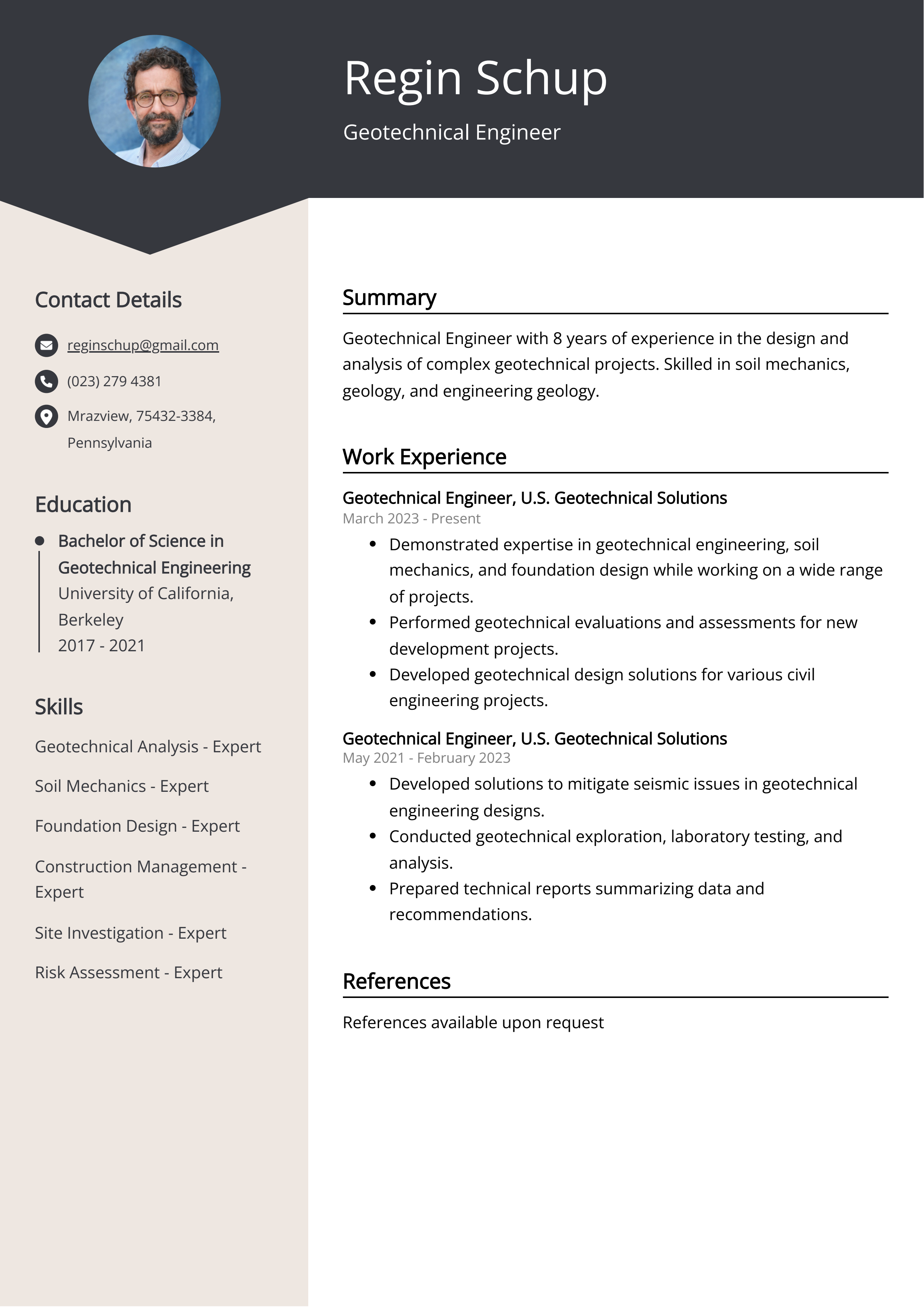Not known Facts About Geotheta
Not known Facts About Geotheta
Blog Article
Geotheta - Truths
Table of ContentsGeotheta - The FactsGeotheta - TruthsExamine This Report about Geotheta10 Easy Facts About Geotheta DescribedSome Ideas on Geotheta You Need To Know

They conduct site examinations, accumulate samples, carry out research laboratory tests, and assess information to examine the viability of the ground for building jobs - Geo Tech Engineering. Based on their findings, geotechnical designers provide suggestions for structure style, incline stability, preserving frameworks, and mitigation of geotechnical hazards. They collaborate with other professionals, such as designers, architectural designers, and construction teams, to make sure that geotechnical factors to consider are integrated into the overall project style and execution
By examining the actions and homes of soil and rock, they can identify prospective geotechnical risks such as landslides, soil settlement, or slope instability. Their proficiency aids protect against failings or mishaps that might endanger lives and home. Below are some thorough tasks and obligations of a geotechnical engineer: Website Examination: Geotechnical engineers conduct website investigations to gather data on subsurface conditions.
They interpret the data to comprehend the homes and actions of the dirt and rock, including their toughness, leaks in the structure, compaction features, and groundwater problems. Geotechnical Analysis and Design: Geotechnical designers evaluate the data accumulated during site investigations to assess the security and suitability of the website for construction jobs. They execute geotechnical computations and modeling to assess aspects such as birthing capability, negotiation, slope stability, side planet pressures, and groundwater flow.
Our Geotheta Statements
Foundation Layout: Geotechnical designers play a crucial role in designing foundations that can safely sustain the designated structure. They evaluate the soil problems and tons demands to determine the ideal foundation kind, such as shallow foundations (e.g., footings), deep structures (e.g (https://www.openlearning.com/u/ianhammond-shld0k/)., piles), or specialized techniques like soil renovation. They consider variables such as negotiation limitations, birthing capacity, and soil-structure communication to develop optimal structure designs
They evaluate building and construction plans, monitor website tasks, and carry out field assessments to confirm that the design referrals are complied with. If unanticipated geotechnical issues arise, they analyze the circumstance and provide referrals for remediation or changes to the layout. Danger Evaluation and Reduction: Geotechnical engineers analyze geotechnical threats and risks associated with the project site, such as landslides, liquefaction, or dirt erosion.

Collaboration and Interaction: Geotechnical designers work closely with other specialists entailed in a job, such as designers, architectural engineers, and construction groups. Effective interaction and cooperation are necessary to integrate geotechnical considerations right into the overall project layout and building and construction process. Geotechnical engineers give technical proficiency, response queries, and make sure that geotechnical needs are fulfilled.
Not known Facts About Geotheta
Here are some kinds of geotechnical engineers: Foundation Designer: Foundation designers focus on designing and examining foundations for frameworks. They assess the soil conditions, tons requirements, and site qualities to figure out the most proper structure kind and layout, such as shallow structures, deep foundations, or specialized strategies like pile structures.
They evaluate the aspects affecting slope security, such as soil residential properties, groundwater conditions, and slope geometry, and establish approaches to prevent incline failings and mitigate threats. Earthquake Designer: Quake designers specialize in evaluating and developing structures to endure seismic forces. They assess the seismic hazard of a site, examine dirt liquefaction capacity, and develop seismic design standards to make certain the safety and durability of structures during quakes.
They do field screening, collect examples, and examine the accumulated data to identify the soil properties, geologic formations, and groundwater conditions at a website. Geotechnical Instrumentation Designer: Geotechnical instrumentation designers concentrate on tracking and determining the habits of soil, rock, and structures. They mount and maintain instrumentation systems that keep an eye on aspects such as soil negotiation, groundwater levels, slope go to the website movements, and architectural displacements to examine performance and give early cautions of potential concerns.
Rumored Buzz on Geotheta
They conduct examinations such as triaxial examinations, combination examinations, direct shear tests, and permeability examinations to gather data for geotechnical evaluation and design. Geosynthetics Designer: Geosynthetics engineers concentrate on the design and application of geosynthetic products, such as geotextiles, geogrids, and geomembranes. They use these materials to improve soil security, enhance inclines, offer water drainage services, and control erosion.
They often tend to be investigatory people, which implies they're intellectual, reflective, and curious. They are curious, methodical, reasonable, logical, and rational. Some of them are also social, implying they're kind, generous, cooperative, person, caring, practical, compassionate, tactful, and pleasant - Tailings Engineer.
In the office atmosphere, geotechnical designers use specialized software application devices to carry out computations, produce layouts, and assess data. They prepare reports, review project specifications, connect with clients and employee, and coordinate job activities. The office setting provides a helpful atmosphere for research study, analysis, and partnership with other professionals associated with the job.
Geotheta - Truths
They regularly check out project sites to perform site investigations, examine geotechnical conditions, and gather data for analysis. These brows through entail traveling to various places, occasionally in remote or difficult terrains. Geotechnical engineers might perform soil tasting, conduct tests, and display building and construction tasks to make certain that the geotechnical aspects of the task are being implemented appropriately.
Geotechnical designers additionally work in specialized geotechnical laboratories. Geotechnical research laboratory designers work thoroughly in these environments, handling screening devices, operating instruments, and tape-recording data.
Report this page